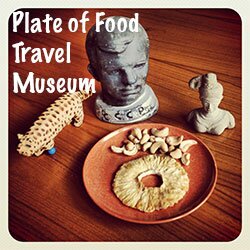It’s odd to go to any place that’s experienced recent disaster — Phuket after the tsunami, the World Trade Center site after 9/11 or here in Yangon after peaceful protests by monks in robes turned violent across TVs and newspapers worldwide a couple months ago. Being back in Yangon, my first time here in three years, feels remarkably the same — as it never happened. Last night I wandered down 19th Street in Chinatown, where barbecue shops plop out plastic tables and chairs onto the tiny street after dark and serve grilled mutton, shrimp, vegetables for beer-drinkers in the open air. Street vendors with antique wood carts pushed by displays of pineapples or smoking roasting peanuts, as cars ebbed slowly down, tapping the horn for beggars and a foreign tourist or two to get out of the way. Over by the central Sule Paya, a gold-topped pagoda on a main downtown street, moneychangers asked ‘you want to change money? Good price!’ I crossed the wide boulevard, dodging oncoming cars along with monks and businessmen and into a bookstore selling 80-year-old copies of ‘Treasure Island,’ left behind from the English colonial days. All this I’ve done before here, but still there’s a sense something’s changed. The difference only comes when you speak to people.
A 60-year-old bald guy at a teashop adopted me, and was clearly outraged that monks would be shot by the military. ‘There have only been two times the government has killed monks,’ he told me. ‘The first was years ago when a non-Buddhist Shan king killed monks at Inwa. And then in September.’ He holds out hope that change can come — ‘but it must go through China,’ he said. ‘I hope the US will boycott the Olympics.’
Another 20-something tattooed guy I met, with a seemingly a permanent smile, said his brother marched in the streets. ‘They knew how far to stay away because the soldiers’ rifles can only shoot 600m, so they stood 601m away.’ But as the soldiers edged closer, disguising their steps by stepping with one foot and dragging the other behind, a guy next to his brother ripped open his shirt and yelled out, then suddenly fell to the ground, killed by a gunshot. ‘My brother got away, but he’s in some of the photos you see.’
Yesterday I walked by the now-infamous spot where the Japanese photographer was shot and snapped a few photos of the building and billboard behind him. I looked back across the street to see where the video had been shot from — a corner apartment block had half a dozen storeys with balconies. With a little geometry, I’m guessing, you could figure out where the video camera was set. Thank goodness the government is so anti-education.







